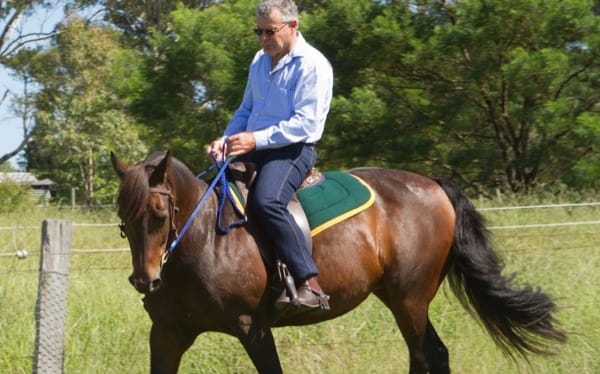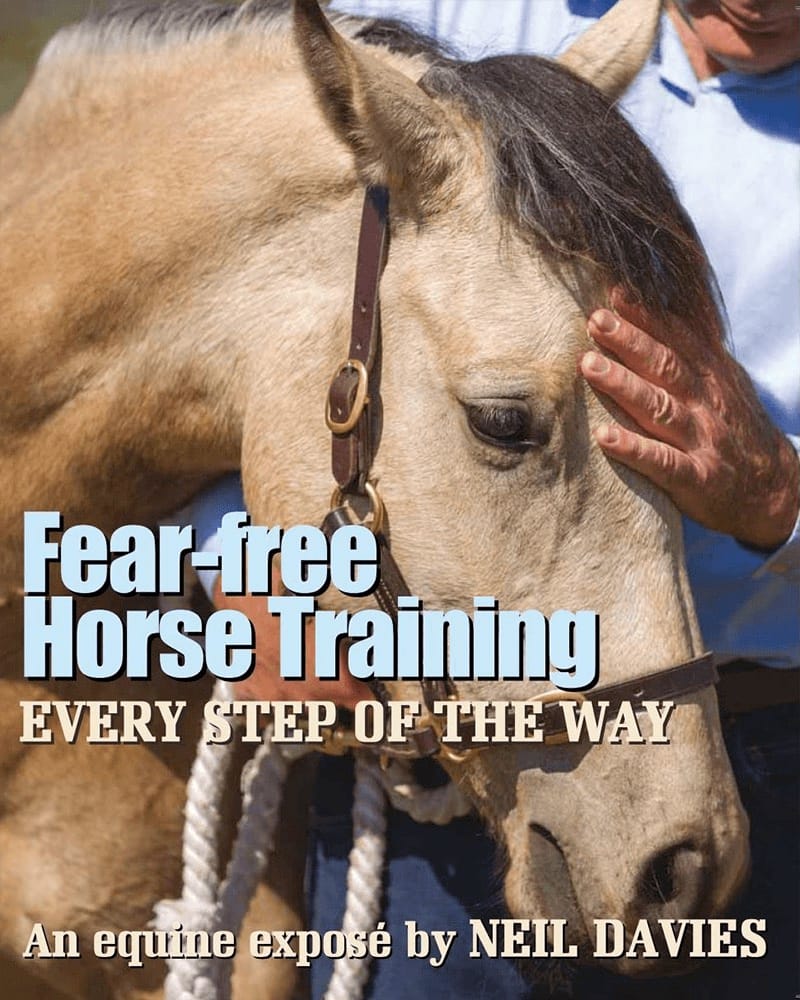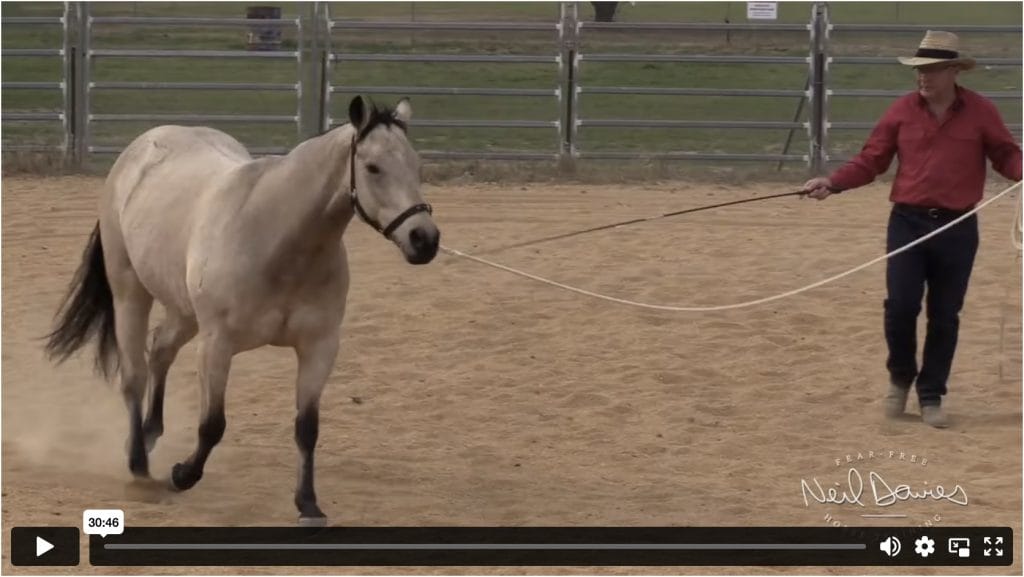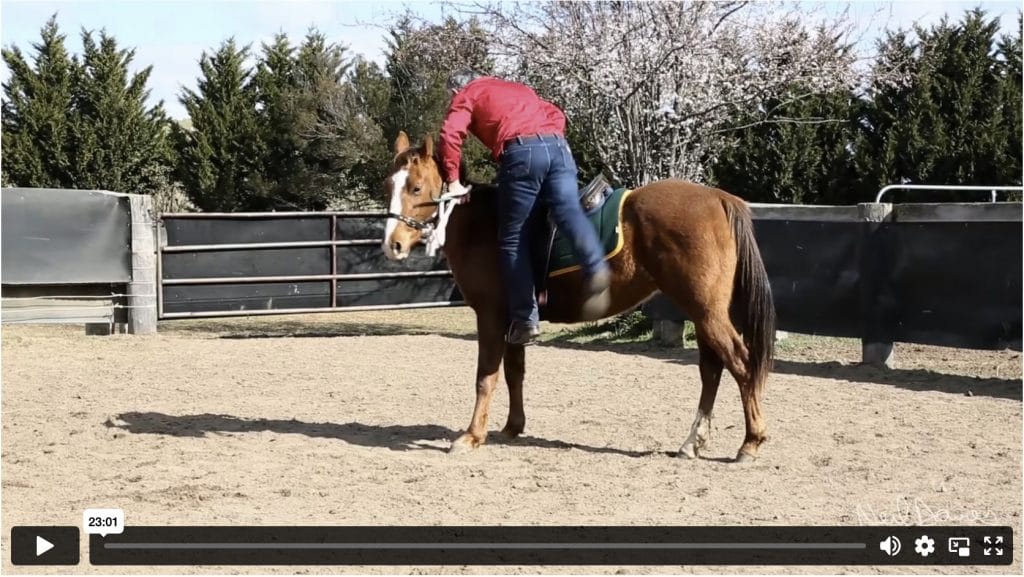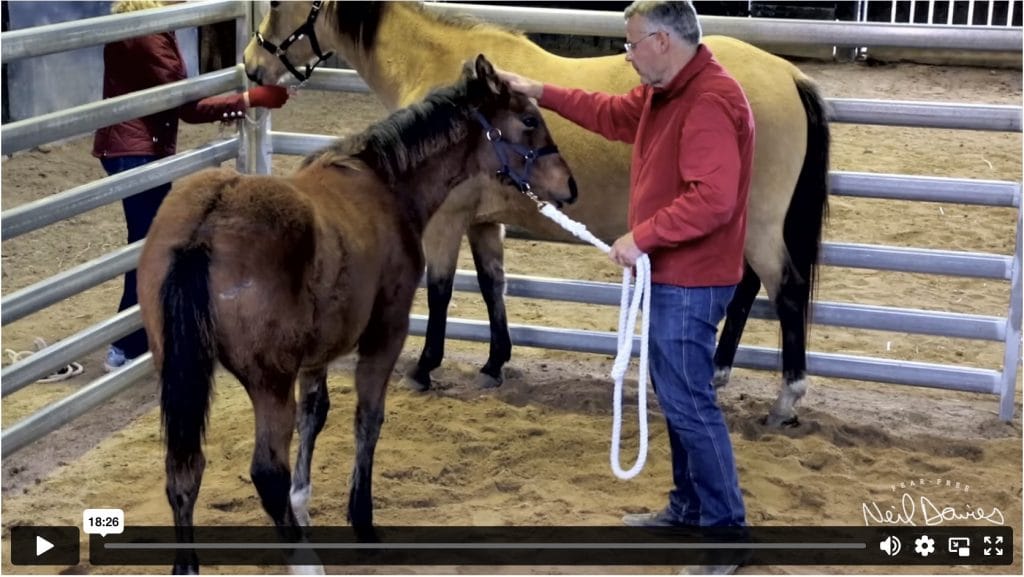You must have control whenever you ride or handle your horse.
Control doesn’t mean being heavy-handed and it doesn’t mean that you have to dominate your horse or show him who’s boss.
Control simply means that your horse tries his hardest to work out what you want him to do and he tries his hardest to do it.
You must remember that the only part of a horse that anyone can control is his mind.
No-one can control a horse’s feet, or his neck, or his mouth, or his ears.
You can only control his mind. It’s his mind that tells him what to do with the rest of his body.
You’ve lost control when:
• You ride down the road and your horse stops to look at something in the bushes.
• You trot around the arena and your horse shies and rushes away from a rug on the fence.
• Your horse sees a plastic bag flapping in the wind and takes fright.
When your horse does these things, it means that he’s stopped concentrating on you and he’s now concentrating on the thing that ‘worries’ him.
He’s no longer trying his hardest to do what you want.
To overcome shying, you must gain better control of your horse.
You must teach him that even though he’s worried, he must still do as you ask.
You must teach your horse that no matter the distraction, it’s more important to do what you want, than it is to stop and look or rush away.
It’s never a question of exposing him to things that flap or bang or squeak.
And it’s certainly never about getting him ‘used to’ anything or ‘desensitising’ him.
My own horses have never been confronted with things that frighten them.
They’ve never had flapping flags or bags waved at them at any stage.
They’ve never been ‘desensitised’.
Equally, they’ve never been allowed to stop and look at things that ‘worry’ them.
From day one, my horses are taught to concentrate on me and on what I ask them to do.
When I ride down the road and my horse hears a rustle in the bushes or sees a plastic bag flapping in the wind, his ears point towards the distraction,
I feel him slow down and look at the object or try to speed up.
In other words, my horse stops thinking about me for a second or two.
I immediately remind him that it’s more important to do what I want, than it is to do what he wants.
I bring my legs on and don’t allow him to speed up or slow down.
I bring his concentration back to me.
I make sure he has at least one ear back listening to me.
I simply continue walking down the road, at the exact speed I want, on the exact line I want.
I don’t allow my horse to stop and look.
And I never, ever go back and walk past the offending object for a second time.
In other words, I don’t allow my horse to take control.
I make sure that he tries his hardest to do what I want, no matter what the distraction is.
And, most important of all, I don’t make an issue of the distraction.
In a very short space of time, my horses learn that it’s always easy to do as I ask.
They learn that I don’t confront them with frightening situations and their confidence builds.
My horses know that all they have to do is concentrate on me, and move where and how I ask them to.
Remember, when your horse shies, you’ve lost control.
You don’t have to get your horse ‘used to’ whatever he shies at.
You have to go back to basics, away from any distractions, and gain more control.
You have to teach your horse that what you want to do is more important than whatever he wants to do.
Otherwise, he’s out of control.
See how to teach your horse to concentrate on you, in my Fear-free Fundamentals Online Clinic

